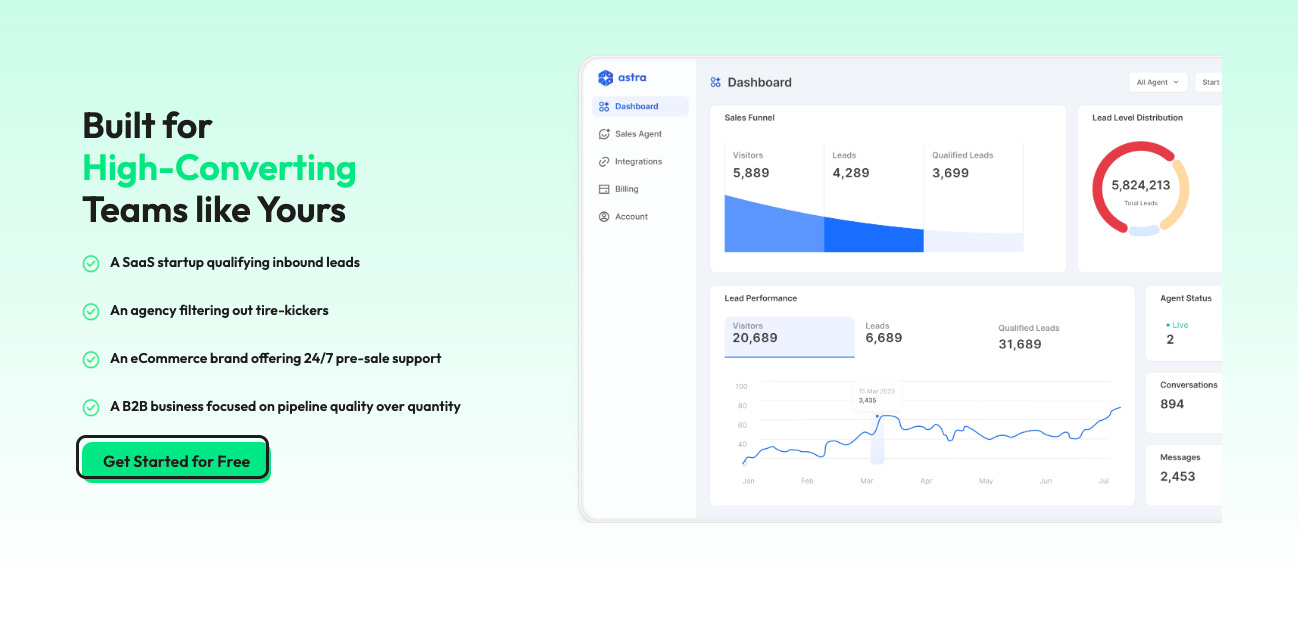⚡ Inside GPT-5’s Power Play
PLUS: AI Pricing War Ignites
Happy Wednesday!
Welcome to The AIfoundry family. A newsletter that demystifies AI for 100,000+ business professionals from companies like Coca-Cola, Walmart, Meta, Google, Starbucks, and more.
What a day! The latest AI scoop covered in today’s newsletter:
OpenAI’s GPT-5: Power, Pricing, and the Push for AI Dominance
AI Agents Go Mainstream: From Research Labs to Everyday Websites
The Big Shift: AI Pricing Wars and What It Means for Innovation
Word From Today's Partner: Astra Pilot ❤️Turn Traffic into Sales 24/7 with AI
Stop losing leads to poor qualification. Astra’s AI sales agent engages visitors instantly, scores intent, and delivers only high-quality prospects to your CRM. Day or night. Zero-code setup. Smarter conversations, better conversions.
Start Your 14‑Day Free Trial Today
Daily new AI tools for supercharging your growth & success!TRENDING TOOLS
🤖 Moby Agents - Triple Whale’s AI agent suite for e-commerce
⚡️ GitHub Spark - Create full-stack apps with natural language prompts
🧠 Ash - AI mental health app for anxiety, stress, and growth
💎 Opal - Build and share AI mini-apps with natural language
Stay at the forefront with exhilarating daily AI breakthroughs! 🤖 OpenAI’s GPT-5: Power, Pricing, and the Push for AI Dominance
Foundry Brief:
OpenAI launched GPT-5, touting it as “the best model in the world,” with slight benchmark gains but a major shift in pricing that could trigger an AI price war.
Highlights:
GPT-5 pricing: $1.25 per 1M input tokens and $10 per 1M output tokens, with $0.125 cached input.
Pricing matches or undercuts Google’s Gemini 2.5 Pro and is far below Anthropic’s Claude Opus 4.1.
Benchmarks show marginal performance gains over Claude Opus and Gemini Ultra, with strengths in coding and reasoning.
Developers expect lower operating costs and broader access to advanced AI capabilities.
Sustainability questions loom as Big Tech invests tens of billions annually in AI infrastructure.
In a Wrap:
GPT-5’s aggressive pricing resets expectations on AI economics, likely accelerating adoption and pressuring rivals, though long-term viability will hinge on infrastructure costs and competitive responses.
🚀AI Agents Go Mainstream: From Research Labs to Everyday Websites
Foundry Brief
AI agents are moving from research to real-world deployment on websites and apps, acting independently with API integration and real-time decisions, powered by orchestration tools and modern agent frameworks.
Highlights
Agents are appearing as concierge-style bots and autonomous booking systems on customer-facing sites and apps.
New agents can act independently, integrate with APIs, and decide in real time, expanding beyond chatbots.
Orchestration and observability layers enable safe, scalable multi-agent systems in production.
Frameworks like LangChain and LangGraph underpin planning, tools, and multi-agent workflows.
Platforms like n8n add agentic workflows with 500+ integrations and MCP connectivity.
Businesses deploy self-operating digital assistants for service, sales, and operations to cut cycle times.
Faster user resolutions come from automated decisioning without waiting for humans.
Enterprises manage agent identity, governance, and risk with services like Entra Agent ID.
In a Wrap
Agentic AI is shifting frontlines from human-only to autonomous digital staff, promising faster outcomes and efficiency gains while demanding strong orchestration, governance, and observability to scale responsibly.
💰 The Big Shift: AI Pricing Wars and What It Means for Innovation
Foundry Brief
GPT-5’s launch is catalyzing pricing competition in AI, pressuring Anthropic, Google, and xAI to revisit tiers as OpenAI lists $1.25 per 1M input tokens and $10 per 1M output tokens.
Highlights
OpenAI set GPT-5 pricing at $1.25 per 1M input tokens and $10 per 1M output tokens.
Pricing undercuts Anthropic’s Opus $15 input and $75 output per 1M tokens.
Google’s Gemini 2.5 Pro lists $1.25 to $2.50 input and $10 to $15 output per 1M tokens by context size.
Lower costs can expand access for small businesses, indie developers, and education sectors.
Cheaper inference could spark a wave of micro-SaaS and enterprise integrations as experimentation costs fall.
In a Wrap
The AI contest is shifting from smartest-only to best performance per dollar. Expect rapid product proliferation and developer adoption as rivals adjust pricing to stay competitive, testing long-term cost sustainability.
🍟 AI Crisps
Brief & Unmissable Vital AI DevelopmentsElon Musk posted that X is planning to revive Vine, “but in AI form” — with the beloved video app’s IP currently owned by Twitter (now X).
Similarweb published an update to its AI platform data, with OpenAI’s ChatGPT still accounting for 78% of total traffic share and Google in second at 8.7%.
HiDream released HiDream-E1.1, a new updated image editing model that climbs to the top spot in Artificial Analysis’ Image Editing Arena amongst open-weight models.
Alibaba released Qwen3-MT, an AI translation model with support for 92+ languages and strong performance across benchmarks.
Figma announced the general availability of Figma Make, a prompt-to-code tool that allows users to transform designs into interactive prototypes.
Google introduced Opal, a new Labs experiment that converts natural language prompts into editable, shareable AI mini apps with customizable workflows.







